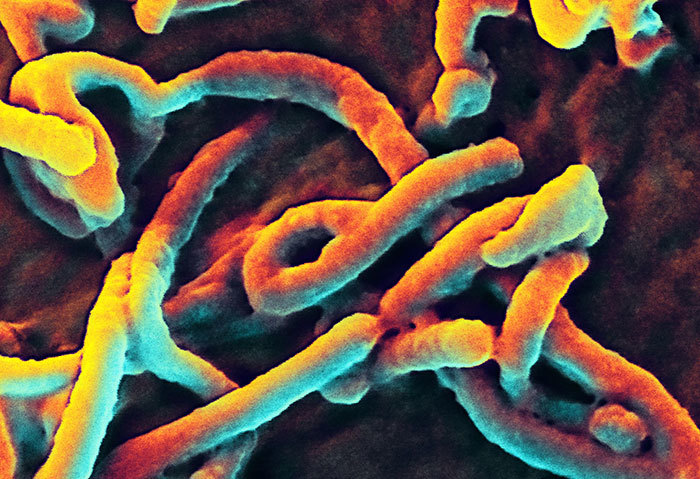Why I am going to Sierra Leone to fight Ebola
28 October 2014 | Story by Newsroom
It's been a month since I applied, and now it's a matter of days until I go. I head to Europe for briefing before landing in Freetown, Sierra Leone next Tuesday.
It is not known how a two-year-old boy from Guinea became the index case. He wouldn't have been slaughtering bats or bush meat, and maybe did not even consume bat soup, a local delicacy. Yet this is where Ebola began in December 2013 '“ according to our current information '“ before spreading to neighbouring Liberia, and Sierra Leone.
In May 2014, a woman from Kenema, Sierra Leone developed symptoms after contact with a sick traditional healer in Guinea. She was lucky to receive early treatment, and survived; while the traditional healer, who had treated Ebola patients, died and was subsequently linked to more than 360 further cases of Ebola.
The number of confirmed cases of Ebola in Sierra Leone is heading towards 2 000, with about 600 deaths to date. Taking advantage of a weak healthcare system, the epidemic has grown exponentially over the past months, amid both calls from the ground for assistance, and criticisms that the global response has been too little, too late.
Now, in October, I will be going to assist, as an epidemiologist. I'll be a tiny cog in a machine, grinding away at an epidemic that has grown out of control, and I'll be spewing out statistics and charting an epidemic curve.
Stories from the field suggest a cloud of denial: that during the lockdown this week, only a few new cases were found, that things were more under control again. Conflicting stories of 20 deaths a day circulate on blogs and Facebook pages. It's hard to know what to believe, and what I will find.
I've been invited out for dinner tomorrow night. Somewhere special; this is no ordinary meal. My friends want to see me before I go. "Wear black '“ as if it's a wake," I snap back in a Whatsapp. They don't say it, but I know that they are anxious that I won't come back the person I am now, or at all.
"I don't want your children to be without a mother." A plaintive plea, on another Whatsapp message earlier today. "Do you have to collate the stats from there? In this day and age, can't they email them to you?", and "I'd never go!", and the dreaded, existential, "Are you sure you should be doing this?"
Yellow fever, done. Meningitis, still valid. Need Hep A and B checked. No time for rabies boosters before I go. My doctor warns me to stay away from wild animals, and I should be okay '“ and don't forget the malaria prophylaxis. Training in biohazard security is mandatory, and today I practised dressing in and undressing out of personal protective equipment (PPE) '“ those hazmat suits that are becoming commonplace on page 1, 2 or 3 of the newspapers.
One hears about the stifling feel of the mask and the goggles, and it's true... you want to run away from yourself when you're in that suit. This is why some recommend not more than two hours of work in them at a time. But there are two contagions at play here, continues our instructor: Viral Haemorrhagic Fever (VHF), and the 'Oh, Shit' syndrome. The former belongs to the patient, and the latter is a malaise suffered by panicked healthcare workers exposed to VHF '“ and possibly by anyone who is slightly 'germaphobic' and who reads the local news.
Just remember, it's bodily fluids we're talking about, he continues, only body fluids; you can't get VHF from a toilet seat '“ unless you're sitting on top of an Ebola patient. The virus survives only a short time if treated with chlorine and sunlight. (A swimming pool on a summer's day comes to mind, as a lifesaver.)
Powerpoint slides of patients, showing the progression of the illness from day five to day nine (usually death), are unnerving. Bleeding from all orifices and from needle puncture-sites makes it increasingly difficult to manage a patient.
Someone in the training group asks, "What do they do with the bodies?"
The instructor laughs. "This question always comes up!" he remarks.
Three body bags. Decontamination procedures for each bag, including the injection of formaldehyde between the bags. Cremation is preferred; preparation for burial is terribly complex, with all sorts of permissions required. But the luxury of choice may only apply right here. Stories from West Africa suggest mass graves, with bodies carried by burial teams in torn hazmat suits. No triple-protection body bags.
I go up to the instructor afterwards to ask for a copy of the slides. My colleague lets it slip: "She leaves for Sierra Leone on the weekend." I cringe. Every time the news of my departure is uttered, I get the usual. "Gosh, erm ... you're crazy/brave/admirable, but '“ should you be doing this?" I suppose anyone reading this article will be asking the same question.
Perhaps I am crazy, but I have the tools of the trade, and I need to help. I think back to when I first learned about Ebola, though a written assignment on an infectious disease epidemiology course. It sounded so exotic. Something that happened to other people, preferably far away (we're only famous for HIV/AIDS and TB, remember). The assignment made Ebola seem manageable on paper: the epidemic curve petered out, with only a handful of deaths, due to infection control in the hospital and effective contact tracing in the rural context.
In contrast, the current epidemic is no hypothetical outbreak, neatly fitting onto a five-page assignment; it is one of extraordinary proportions. Hospitals have been forced to shut due to healthcare-provider deaths and desertions, and lack of infrastructure. Ebola-stricken patients are turned away from the remaining hospitals because they have no capacity to take in more. They are sent home to die, and to infect those around them. We are sharing a continent with others who are bearing the consequences of a foundering health system, which is in turn betraying its own people. While I fully understand the risks, it's time to put my money where my mouth is. I need to plot that epidemic curve for real. Hence, the question isn't whether I should be doing this, but rather: how can I not do this?
 Kathryn Stinson has a PhD in Public Health and is an epidemiologist at the University of Cape Town. She has three children, two Great Danes and one very supportive husband. Kathryn writes in her personal capacity.
Kathryn Stinson has a PhD in Public Health and is an epidemiologist at the University of Cape Town. She has three children, two Great Danes and one very supportive husband. Kathryn writes in her personal capacity.
Photo of Kathryn Stinson and article were first published on GroundUp under a Creative Commons 4.0 License. Ebola scan courtesy of NIAID under creative commons 2.0 license.
Read more:
Ebola: Where are the sick and dying?
 This work is licensed under a Creative Commons Attribution-NoDerivatives 4.0 International License.
This work is licensed under a Creative Commons Attribution-NoDerivatives 4.0 International License.
Please view the republishing articles page for more information.










